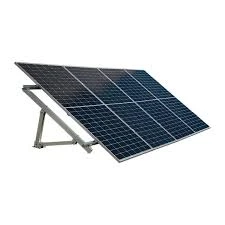sizing your solar system
Sizing Your Solar System A Comprehensive Guide
In recent years, solar energy has emerged as a popular solution for both residential and commercial energy needs. However, one of the crucial steps in harnessing solar power effectively is sizing your solar system appropriately. The right size ensures that you maximize efficiency, reduce costs, and meet your energy needs without overpaying for unnecessary capacity.
Understanding Your Energy Needs
Before diving into the specifics of sizing a solar system, it's essential to understand your energy consumption. Start by reviewing your electricity bills from the past year to determine your average monthly and yearly kilowatt-hour (kWh) usage. This data helps you gauge the size of the solar system required to offset a significant portion (or all) of your electricity consumption. It's wise to consider future energy needs as well, particularly if you plan to add appliances, renovate your home, or install electric vehicles.
Calculating Solar System Size
The general rule of thumb for estimating the size of a solar system is to divide your annual energy consumption by the number of sunlight hours your location receives. For instance, if you consume 12,000 kWh per year and your area averages 5 sunlight hours per day, the calculation would look like this
1. Convert annual usage to daily 12,000 kWh / 365 days = approximately 32.88 kWh per day. 2. Calculate the daily kWh produced by the solar panels 32.88 kWh / 5 hours = approximately 6.58 kW.
sizing your solar system

Therefore, you would need a solar system of around 6.58 kW to meet your energy needs.
Consider System Losses
It’s important to account for system losses, which can occur due to factors like shading, temperature, and inverter efficiency. A common estimate for efficiency losses is around 20%. To adjust for these losses, multiply your calculated system size by 1.2. In our example, this would result in a recommended system size of about 7.9 kW.
Choosing the Right Components
Once you’ve determined the appropriate system size, it’s time to choose the right solar panels and inverter. Solar panels come in various efficiencies, so selecting high-efficiency panels can allow you to install a smaller system while still meeting your energy needs. The inverter, on the other hand, is vital in converting the direct current (DC) produced by solar panels into alternating current (AC) for home use. Make sure to select an inverter that can handle the output of your solar array.
Final Thoughts
Sizing your solar system accurately is critical for maximizing your investment in renewable energy. By understanding your energy needs, making precise calculations, factoring in losses, and selecting compatible components, you can design a solar power system that meets your requirements effectively. Investing the time in careful planning will not only save you money in the long run but also contribute to a more sustainable future.
-
Unlocking Energy Freedom with the Off Grid Solar InverterNewsJun.06,2025
-
Unlock More Solar Power with a High-Efficiency Bifacial Solar PanelNewsJun.06,2025
-
Power Your Future with High-Efficiency Monocrystalline Solar PanelsNewsJun.06,2025
-
Next-Gen Solar Power Starts with Micro Solar InvertersNewsJun.06,2025
-
Harnessing Peak Efficiency with the On Grid Solar InverterNewsJun.06,2025
-
Discover Unmatched Efficiency with the Latest String Solar InverterNewsJun.06,2025







